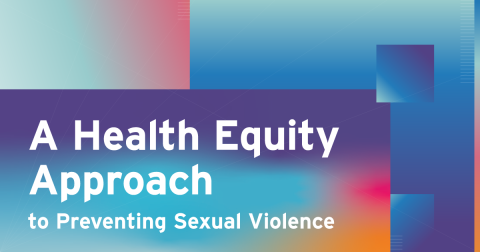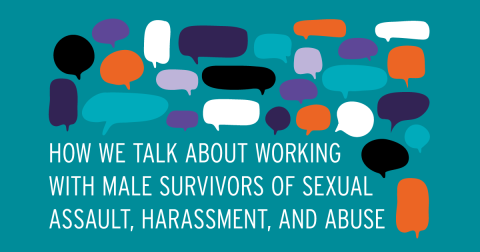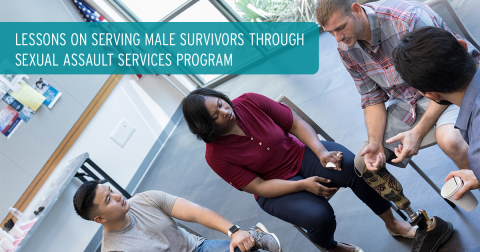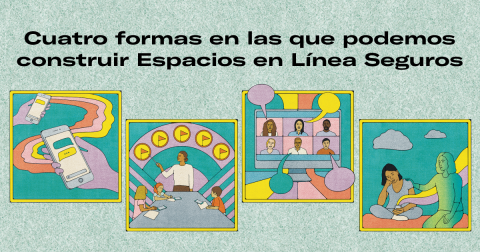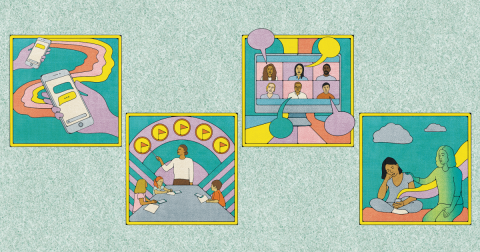- September 09, 2021
- Emily Bigger
This document was co-authored by staff of the National Sexual Violence Resource Center and National Resource Center on Domestic Violence, with significant input, guidance, and leadership from Black and women of color survivors and advocates. This resource makes connections between health equity and our work to prevent sexual and intimate partner violence. It centers the stories of survivors at the intersections of systemic racism, violence, and oppression. It explores ways to build both individual and organizational capacity to address health inequity. And, it offers a call to action for
- July 22, 2021
- Emily Bigger
Sexual assault advocates and rape crisis centers can use this self-assessment tool to reflect on your current work serving men who have had unwanted sexual experiences. The tool offers reflection questions related to individual and organizational capacity to serve male survivors. This resource is part of Working with Male Survivors of Sexual Violence.
- June 16, 2021
- Emily Bigger
Sexual harassment, abuse, and assault can have short- and long-term physical, emotional, and psychological effects on a person’s well-being and impact an entire community, from the culture and connections between people to the economic toll. Preventing sexual violence means we all must address deep-rooted abuses of power that contribute to inequities in health, safety, and well-being. A health equity approach to preventing sexual violence means that we need to both understand and address the factors that contribute to violence and safety and factors that expose
- June 09, 2021
- Emily Bigger
How we talk about sexual violence matters. Whether you’re describing your center’s services to a friend, talking with a classroom of college students about preventing sexual harassment, or writing your agency’s newsletter, the words you use have an impact on how audiences understand those topics. They also have an impact on who sees themselves as eligible for your center’s services. Because you want to raise awareness in your community that men experience sexual violence, and let men know that your sexual assault center is here to help, make sure your language
- May 26, 2021
- Emily Bigger
A resource containing lessons learned from sexual assault services programs with comparatively high percentages of male survivors served with that funding stream. This resource is part of Working with Male Survivors of Sexual Violence.
- May 03, 2021
- Emily Bigger
Learn how to practice digital consent, intervene when we see harmful content or behaviors, and ensure that online spaces — whether they be workspaces, classrooms, social media platforms, or otherwise — are respectful and safe.
- April 29, 2021
- Emily Bigger
This NSVRC Evaluation Toolkit webinar introduces preventionists to principles-focused evaluation (PFE), which identifies principles describing core values and behaviors used to foster successful prevention work. PFE complements outcome evaluation and supports decision making during prevention implementation. Viewers will learn how to incorporate their own sexual violence prevention effectiveness principles into their evaluation approach. This learning will be accompanied by examples from Washington state’s experience of engaging preventionists in the process of identifying principles –
- April 05, 2021
- Emily Bigger
Learn how to practice digital consent, intervene when we see harmful content or behaviors, and ensure that online spaces — whether they be workspaces, classrooms, social media platforms, or otherwise — are respectful and safe.
- April 01, 2021
- Emily Bigger
We Can Build Online Safe Spaces campaign poster for Sexual Assault Awareness Month 2021. For best graphic quality, download the PDF and then print it out.
- April 01, 2021
- Emily Bigger
We Can Build Online Safe Spaces campaign poster for Sexual Assault Awareness Month 2021. For best graphic quality, download the PDF and then print it out.
Pagination
- Page 1
- Next page



